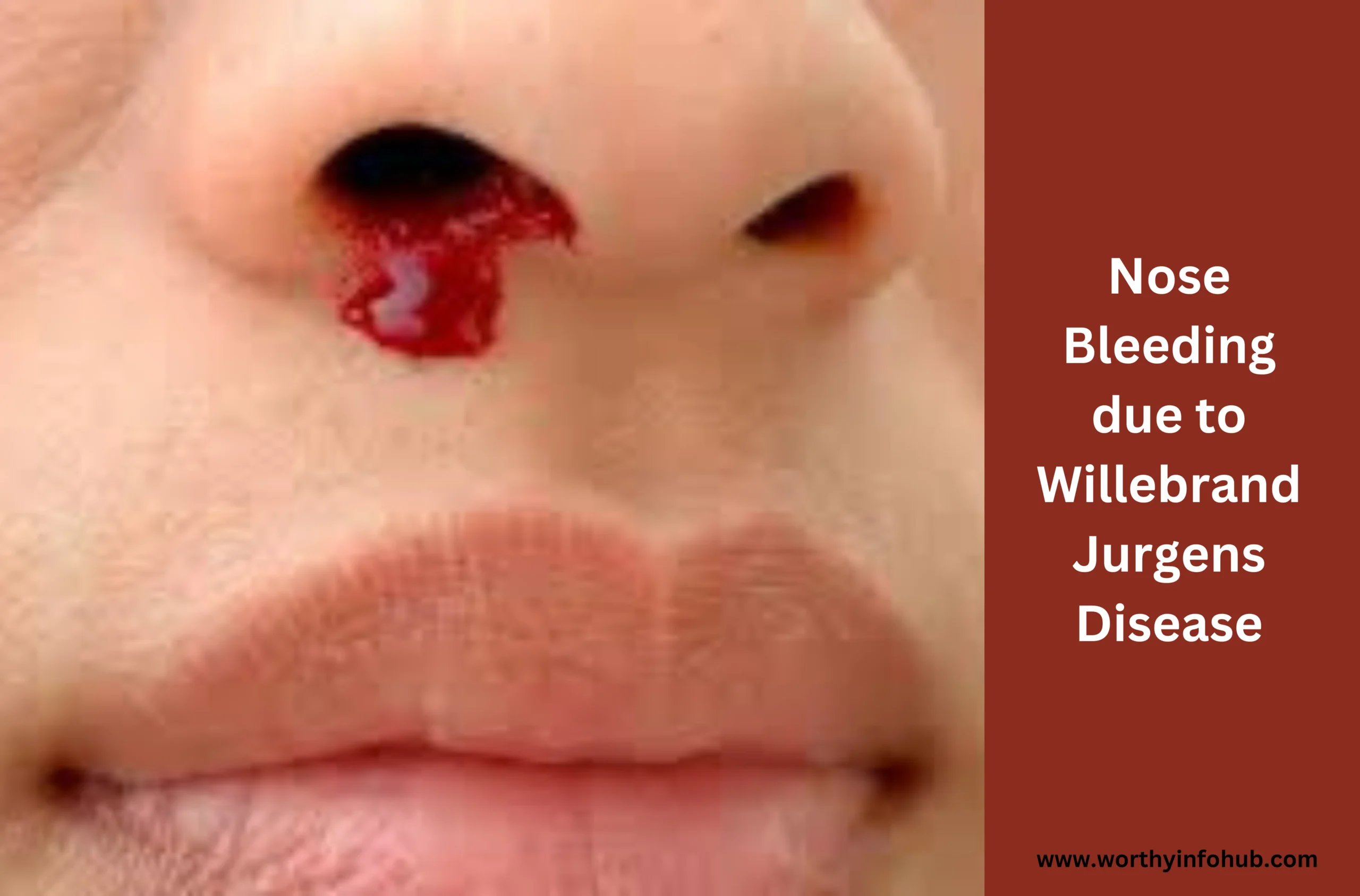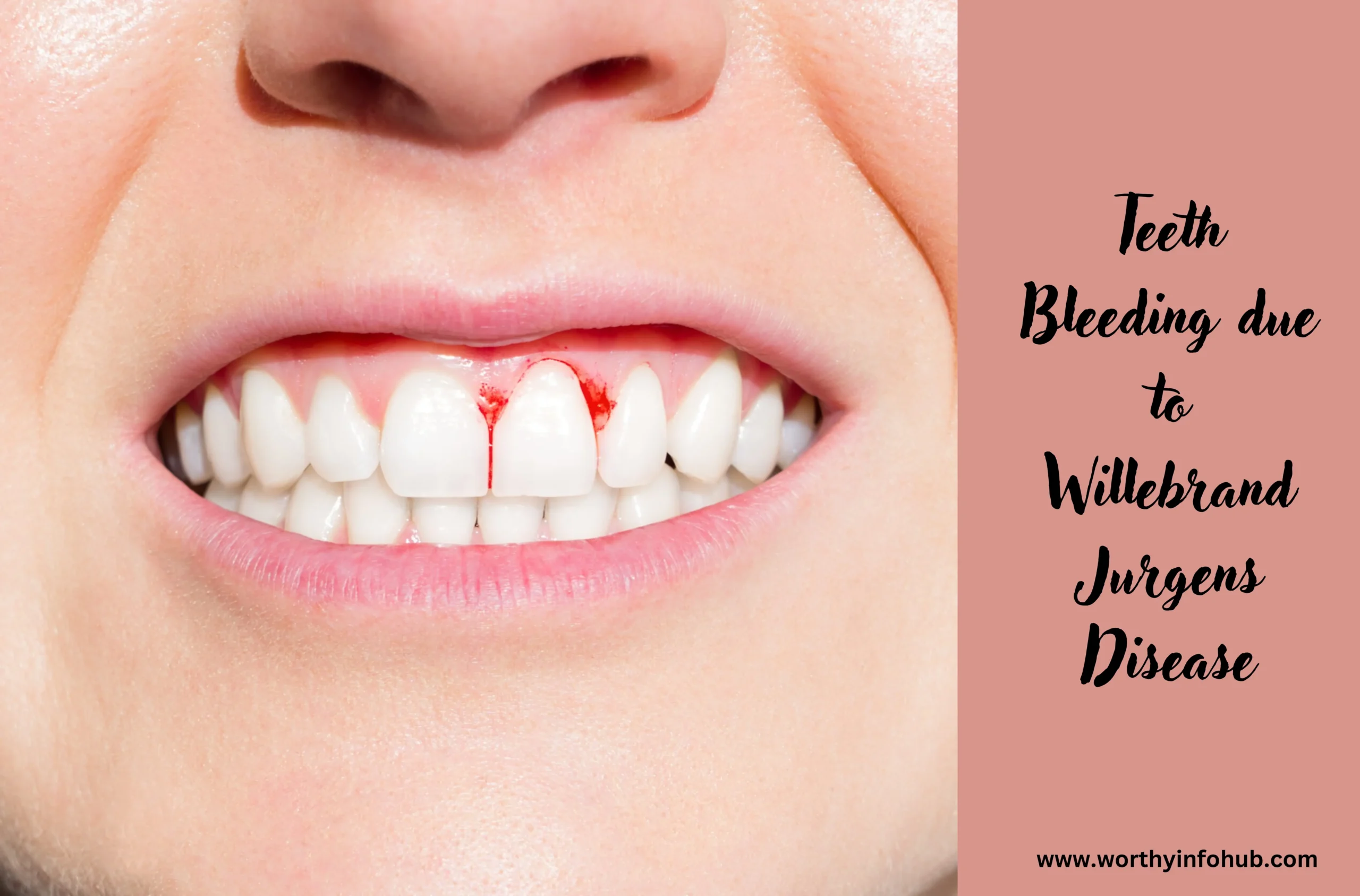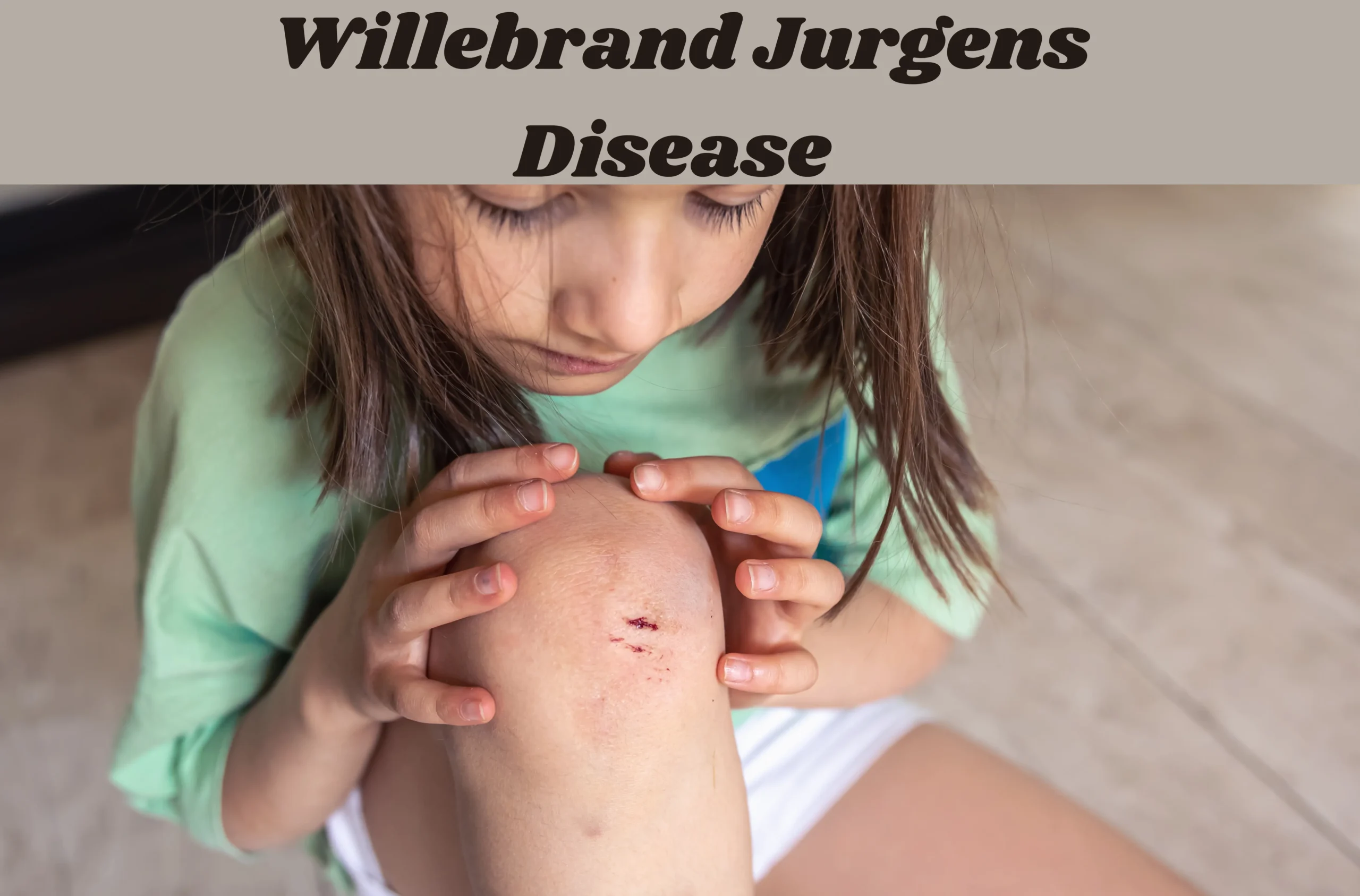Willebrand Jurgens Disease is not a name that rings a bell to many people, but for those that are facing it, it becomes a very important topic they have to study. This disease is a hereditary condition affecting the coagulation process of the blood so the affected patient experiences prolonged bleeding periods. The focus of this article is to explain different sides of Willebrand Jurgens Disease starting from its history and up to diagnosis and treatment.
Introduction
Willebrand Jurgens syndrome (VWS), also called Von Willebrand’s syndrome, or angiohemophilia, is the most common inherited disorder of blood coagulation associated with an increased bleeding tendency. Several types of Willebrand Jurgens syndrome present themselves, the main characteristics of which being that the Von Willebrand factor present in the patient’s blood is altered in some way. The Von Willebrand factor is a important blood clot factor. Lifestyle and quality of life of the individuals infected is often not limited by serious health issues and patients may not even know that they are suffering from this disease.
Willebrand Jurgens syndrome can be said to be the leading hereditary hemorrhagic diathesis. As for current statistics, it is estimated that personality disorder affects approximately 800 persons per 100,000 population, out of which only 12 per 100,000 demonstrate severe impairment. A severe course of Willebrand-Jurgens syndrome is a rare phenomenon and concerns patients in less than 0. 3 per 100,000 people on average, it was estimated. The disease is autosomal dominant in a number of cases, but severe types of the disease are autosomal recessive. Sex distribution of angiohaemophilia is almost equal, it affects both women and men in equal prevalence.
Historical Background
Willebrand Jurgens Disease was identify early in 20th century when Dr Erik von Willebrand discovered the disease amongst a family from Åland Island. His careful investigations helped to identify this major bleeding disorder and is therefore known in scientific practice as von Willebrand’s disease. In the years that have followed, however, many scholars have also brought forth further clarifications in regard to the classification of the disease, as well as regarding the existing treatment methods.
Medical Definition
Willebrand Jurgens Disease is grouped into three main categories, with the characteristics for each varying. Despite the fact that the affected population suffers from pathological bleeding, the disease is quite different from hemophilia in terms of causes and heritability. SFD is mainly confined to a lack or lack of functionality of von Willebrand factor (vWF), which plays a vital role in coagulation.
Causes and Risk Factors
The main underlying factor of Willebrand Jurgens Disease is due to genetic abnormalities of Willebrand factor multimers synthesis or functionality. These mutations are usually inherited; therefore, family history is often a major risk factor. However, there are environmental factors that cause the condition to become worse, these are mostly any surgery or injuries that cause bleeding.
The basis of Willebrand Jurgens syndrome is a qualitative or quantitative pathogenetic at the level of the Von Willebrand factor present in the blood. Von Willebrand factor is a carrier and a protector of the blood clotting factor known as F VIII. Von Willebrand’s deficiency therefore results in a disruption of the usual blood coagulation which when manifested brings a rich symptomology akin to haemophilia A or clotting factor eight deficiency thus characterized by bleeding disorders.
However, one must distinguish between the inherited and acquired forms and it is noteworthy that while the former is the most common, the latter is extremely rare. Acquired forms are rare and are observed mostly in connection with some autoimmune diseases, such as Purpura Schönlein-Henoch, in valvular defects of the heart, mainly affecting the aortic stenosis, and in patients under the treatment with valproate, an antiepileptic drug.
Symptoms and Signs
The manifestations of Willebrand Jurgens Disease will differ but some of the signs may include recurrent epistaxis, spontaneous bleeding from small wounds and prolonged and heavy menstruation. Patients suffering from the severe form may develop what is known as internal bleeding, where the blood component starts to bleed on its own, into the joints and muscles, which is very painful.

Diagnosis
Kliegman, Stanton, Stabile & Straus, 2007 states that, for proper diagnosis of Willebrand Jurgens syndrome, laboratory tests alone should be used. As the standard coagulation tests including INR, quick value, and blood count are either normal or can be only mildly elevated in most of the cases, certain factors such as factor VIII and Von Willebrand factor antigen are quantitative that normally require additional specific examination.
In this context, one must differentiate the qualitative form from the quantitative one of Willebrand Jurgens syndrome, and hence both a qualitative and quantitative test of the Von Willebrand factor needs to be performed. Some of the techniques are ELISA, multimer analysis, or Electrophoresis is done.
These also help in the classification between the disease with other blood coagulation disorders such as the haemophilia A.
Types of Willebrand Jurgens Disease
The type of vWD known as Willebrand Jurgens Disease is divided into three distinct groups: 2A, 2B, and 2M that possess specific features and severity levels. It is hence critical to understand these types as a way of diagnosing the condition and managing it appropriately.
Type 1
Type 1 is the most frequent form of fibrillinopathy and generally, the least severe form of Willebrand-Jurgens Disease. This type is characterized by low levels of vWF, although the levels that are in circulation are perfectly functional. Signs are normally subdued and may include; easily aggravated skin that bruises, frequently occurring nose bleeds, and frequent slow stoppage of blood clout that continues even after cutting lightly. In women, conditions such as climacteric, heavy menstrual bleeding, and menorrhagia are also typical for this disease.
As this type is relatively mild, most people may be asymptomatic until they find themselves in a situation where the tendency to bleed is brought to the limelight through the requirement for surgery, such as a dental procedure.
Type 2
Type 2 is categorized by defective von Willebrand factor. This type is further divided into several subtypes, each with distinct functional abnormalities of the vWF protein:
- Type 2A: In this case, the von Willebrand factor can produce clots when necessary, but it can’t do so correctly. It is noted that vWF molecules are not appropriate in this process that is responsible for proper blood clotting. This disease may manifest the following symptoms, they may not be severe, but they are present: Bleeding and blood clotting problems that include bleeding more than normal after injury or surgery and severely heavy menstrual periods.
- Type 2B: This subtype entails the known attachment of vWF to platelets but in an incorrect manner. In type 2B, the von Willebrand factor amidates too strongly to the platelets and thus they stick together and are then stripped from circulation which again results to low platelet count (thrombocytopenia). People experience abrupt hemorrhage, hematemesis, melena, hematuria petechial and purpuric spots and excessive bleeding following even slight injuries.
- Type 2M: In type 2M, there is a reduced ability of vWF to interact with platelets but the patients’ vWF levels are usually not affected. Due to this, hemostasis is affected with symptoms like mucosal bleeding and also taking a long time to clot when one is wounded.
- Type 2N: Von Willebrand factor’s poor adhesion to clotting factor VIII is the cause of this subtype. This leads to a deficiency of factor VIII in the blood, something which is characteristic of Hemophilia A; people suffering from Type 2N experience symptoms that are usually very close to, if not exactly identical to, symptoms of mild Hemophilia.
Type 3
Willebrand Jurgens Disease is in total of three types with Type 3 being the most severe. Splenectomized patients with Type 3 have nearly negligible or no von Willebrand factor at all. This severe deficiency results in such complications as spontaneous bleedings, haemorrhosis and haematemesis, as well as prolonged bleeding after any bruises and cuts. Type 3 can pose a severe threat to the health of the patient s, and is often characterized by higher levels of treatment and monitoring in comparison with the previous two types.
It is therefore very essential that people and healthcare practitioners that come across Willebrand Jurgens Disease distinguish between the different categories commonly identified today. All of these differ in terms of their degree and manifestations, and this requires unique approaches in order to assist the affected persons to lead healthier lifestyles. Regardless of the nature of the condition, whether it’s a little discomfort of Type 1 or the severities of Type 3, there are general healthcare approaches that enhance the life quality of the person suffering from this illness.

Complications
If left untreated, Willebrand Jurgens Disease manifests various complications that affect an individual’s overall health such as repeated joint bleeding resulting in chronic joint deterioration, and more frequent bleeding during surgeries. The prognosis depends on the stage of the pathology and the success of the interventions carried out by the specialist.
Treatment Options
For Willebrand Jurgens Disease, the recommended management entails the use of drugs that enhance the production of the vWF or its effectiveness. That is why, such medications as desmopressin are widely used for this purpose. Nevertheless, in some cases anticoagulant medicines may need to be replaced with vWF. Other preventive measures include the avoidance of medications that lead to bleeding, adhering to proper food diet and many others.
Due to the frequently only relatively mild clinical presentation of Willebrand Jurgens syndrome, long-term treatment is usually not necessary. However, medicine containing acetylsalicylic acid like aspirin, should be patronized, as they interfere with platelet clumping and hence, the clotting mechanism leading to temporary propensity to bleeding.
Heavy menstrual bleeding can be prevented by the intake of hormonal pills with concentrated progestogen.
Surgery patients are advised to take desmopressin as a preventive measure. By a factor of up to 5, Desmopressin stimulates an increase of vWF in the bloodstream which should minimize bleeding.
But desmopressin does not control type 2B Willebrand Jurgens syndrome – factor concentrates are used in such cases.
Living with Willebrand Jurgens Disease
Living with Willebrand Jurgens Disease means that day-to-day activities should be controlled and performed according to certain plans which are devised in consultation with the doctor. Some of the habits that human should take seriously are dieting and exercising. Contact sports and any activities that predispose an individual to bleeding should be discouraged among patients.
Support and Resources
The Role of Support Groups and Education for Patients and Their Families Education and support are crucial to patients and their families. There are many organizations for example the National Hemophilia Foundation that provides information and support systems for those living with the disease and struggling with the related issues.
Research and Advances
This is an ongoing research since attempts are being made to come up with better follow-up research on Willebrand Jurgens Disease along with better treatment women for it. Better prospects for the effective treatment and potentially curative interventions are expected to come from the investigations of gene therapy and biotechnology.
Coping Strategies
Winning the battle against Willebrand Jurgens Disease involves the following strategies therefore. Counselling and other matters of the psychological health of the patient is an important factor to consider since the illness is not easily cured. Some of the pragmatic suggestions are creating a health diary, using medical ID, and increasing the awareness of the person and his/her close ones about the disease.
Forecast
As Willebrand Jurgens disease in most cases has a quite mild manifest, many of affected persons go through life with no considerable health impairments and are often not even aware of its existence. In severe forms of the disease, however, sufferers must abstain from strenuous activity and from sports in general and including, for instance, boxing, skiing or running.
Additionally, pushing up to operations that may cause postoperative bleeding, it is possible to prevent it by administering the active substance desmopressin.
Prevention
It is pertinent to note that Willebrand Jurgens disease is a hereditary condition which affects the blood coagulation mechanism and therefore there is no known way of preventing it.
Conclusion
The key to effective control of Willebrand Jurgens Disease and general amelioration of suffering among the affected persons is to be abreast with the affection. Due to continuous research on the disease and treatments available, the patients with this disease have a much brighter future ahead with better management tools available in the market. Be aware of information sources, get help, and manage your illness to the best degree to cope with Willebrand Jurgens Disease.
FAQs
- What is Willebrand Jurgens Disease?
A genetic blood dyscrasia known as Willebrand Jurgens disease is typified by a lack or malfunction of von Willebrand factor, a component of the plug proteins that surround platelets.
- How is it diagnosed?
A physician suspects the condition by interviewing the patient and analyzing his/her records, following by performing a physical examination, blood tests to check the level of vWF and its ability to function properly.
- Can it be cured?
To date, there is no known Willebrand Jurgens Disease treatment or strategy for curing the disease, though the condition can be well controlled with the right medical intervention and changes to the patient’s daily routine.
- What is the nature of treatment that can be provided?
Some of the suggested remedies incorporate desmopressin, and vWF replacement therapies, as well as the reduction of activities that cause bleeding.
- Now, knowing the signs most associated with the disease, the next question is how does one lead their daily life when afflicted with the Willebrand Jurgens Disease?
Daily management entails the adherence to prescription on dosage, patterns of body response and ensuring that certain actions are avoided to reduce the likelihood of bleeding as well as getting assistance from the health professionals and support groups.
For more information, visit our Home Page.

